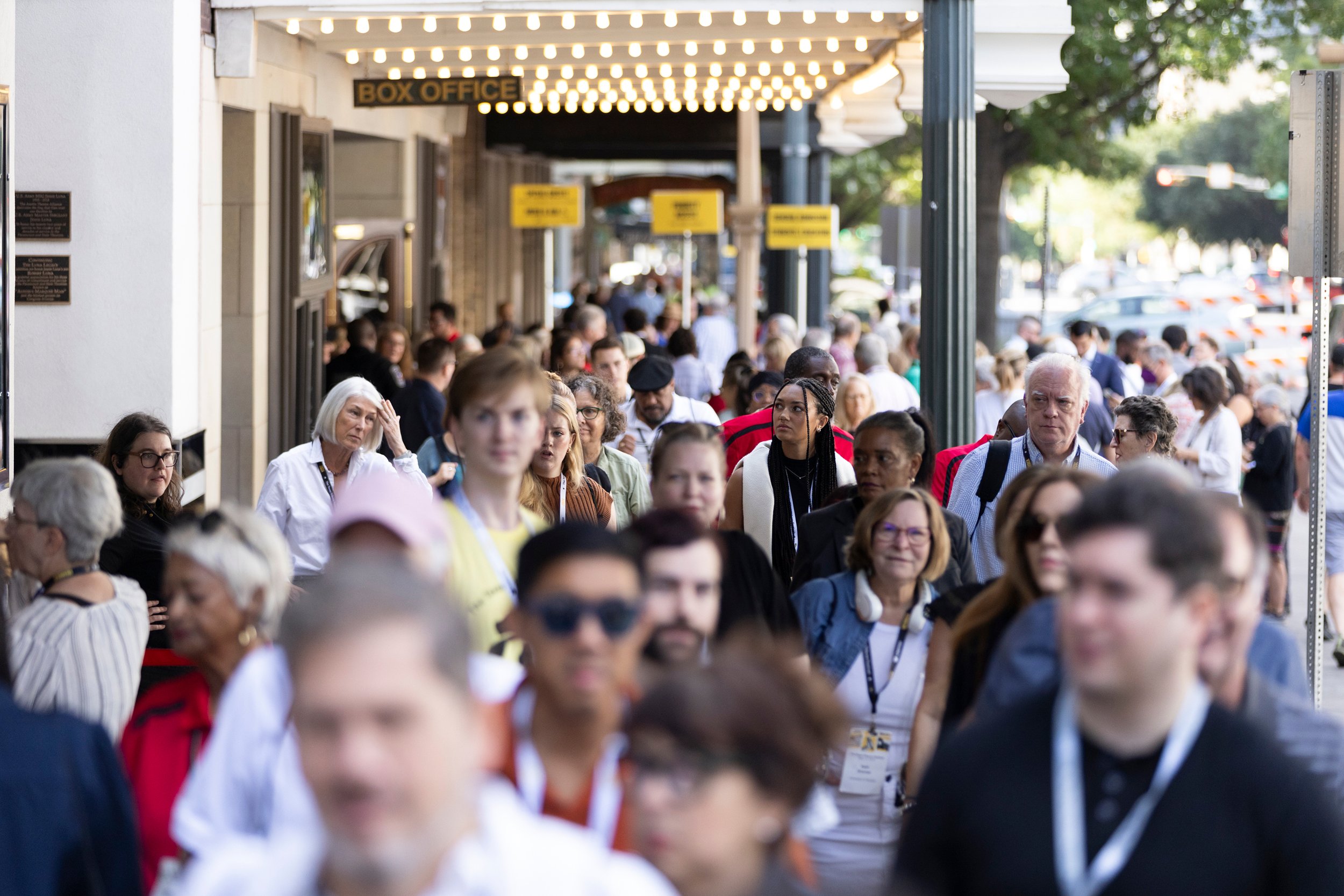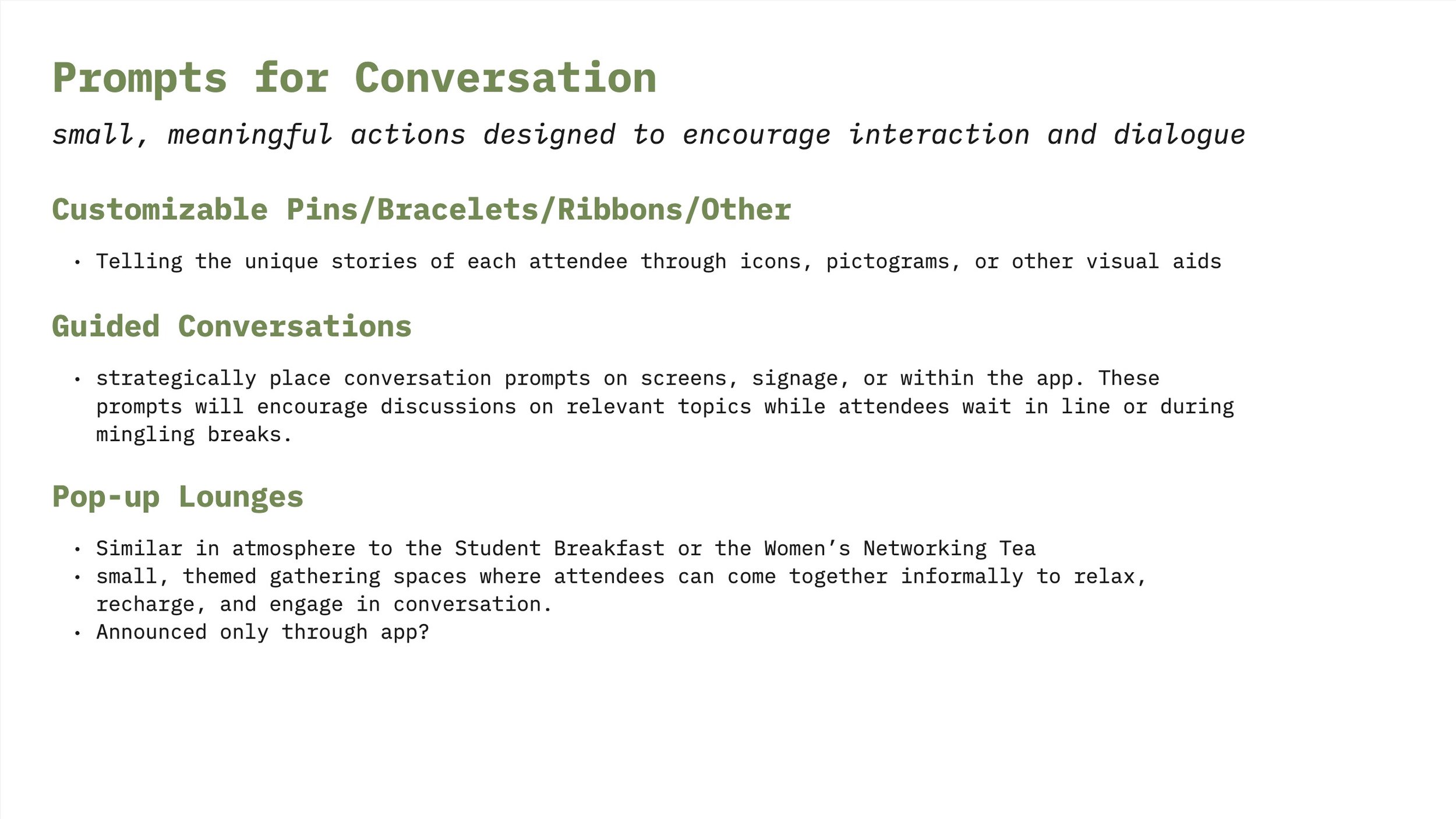DESIGN RESEARCH | SOCIAL DESIGN
Design Research for
The Texas Tribune Festival
Identifying opportunities for connection.
Design Team: Jacob Villanueva, Alfredo Palacios
November 2024
Conducted design research at The Texas Tribune Festival, an annual festival in downtown Austin. Led fieldwork and qualitative synthesis to surface what attendees felt, missed, or hoped for throughout the experience. Shared findings with internal teams to guide improvements in signage, programming flow, and space design for future years.
As The Texas Tribune’s Design Fellow, a lot of my work revolved around production design for The Texas Tribune Festival. Since its first year in 2011, TribFest has seen a lot of change throughout the years, from venues and topics to the visual brand of the Festival. The Tribune is known to be a pioneer in all realms in and out of media, keeping a close eye on what matters to audiences, and adapting to an ever-dynamic field.
As the festival evolves, so do the needs of its attendees. The Tribune wanted to better understand how people were actually experiencing the event, beyond just the programming.
My Role and Research Approach
Over the course of the three-day festival, I conducted ethnographic research in real time. That meant observing movement patterns, listening in on moments of confusion or excitement, and talking to attendees in between sessions. I wanted to know not just where they were going, but how they were feeling.
Read more about the research strategies I’ve employed for TribFest here.
Between interviews, I sketched quick journey maps to capture individual experiences. I watched how people interacted with signage, how long they lingered in certain areas, and what kinds of spaces encouraged pause, conversation, or escape.
After the event, I sorted my notes and sketches into key insight clusters: where the environment fostered connection or created friction, what users noticed versus what they didn’t, and how those moments shaped their overall perception of the event.
How might we better understand the emotional and spatial experience of festival attendees in order to support a more intuitive, engaging civic event?
Insights & Recommendations
Through these observations and conversations, I surfaced a few patterns and areas for improvement:
Attendees were often unsure about where to go next or how long it would take to get there
Physical signage sometimes competed with its surroundings, or didn’t match expectations set by the digital schedule
Attendees expressed curiosity about how to make the most of the festival but weren’t always sure where to start.
In response, I created a synthesis report with suggestions such as improving wayfinding clarity and consistency between physical and digital formats, and designing intentional moments to engage participants in conversation with their fellow attendees.
A journeymap representing the experiences of the 4 user personas highlighted in my research. While individual journeymaps were created, viewing them all in one place allows stakeholders to compare and contrast, and identify areas of improvement for all.
This was the first time I practiced live design research at a public event, and it changed the way I think about experience design. The most important moments are not only the ones on stage. They’re in the margins, the hallways, the awkward silences and the small delights.
Design research helped the Tribune see its festival through the eyes of the people it serves. For me, it was a reminder that user experience goes beyond the screen. It starts the moment someone asks, “Where do I go next?”










